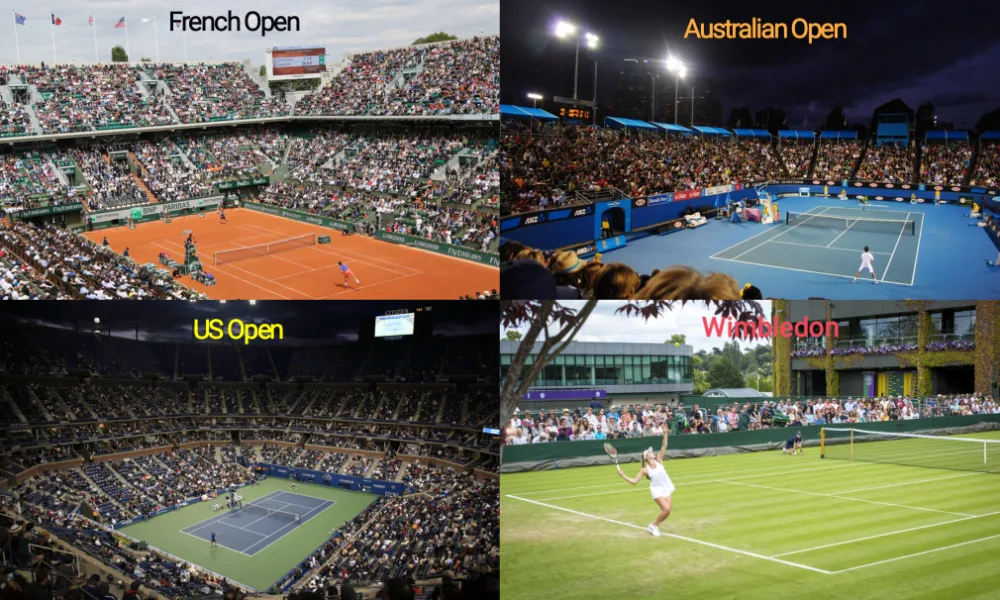
A unique aspect of tennis is the fact that the game is played on different surfaces throughout the year. Players must be able to find success on different surfaces if they want to be the true number one player in the world.
The four Grand Slams fall into three categories for court surface. Both the Australian Open and US Open use hard courts, even though they use slightly different materials. The French Open uses clay, while Wimbledon is on grass.
A Closer Look At The 4 Grand Slam Surfaces
Knowing a bit more about the four surfaces helps people understand how the game plays. All four tournaments have played around with the surface a bit to get it to perform the way they like.
Here’s what surfaces the Grand Slam tournaments are played on today.
| Tournament | Surface | Location |
|---|---|---|
| Australian Open | Hard Court | Melbourne, Australia |
| French Open | Clay Court | Paris, France |
| Wimbledon | Grass Court | London, England |
| US Open | Hard Court | New York, USA |
Australian Open – Hard Court
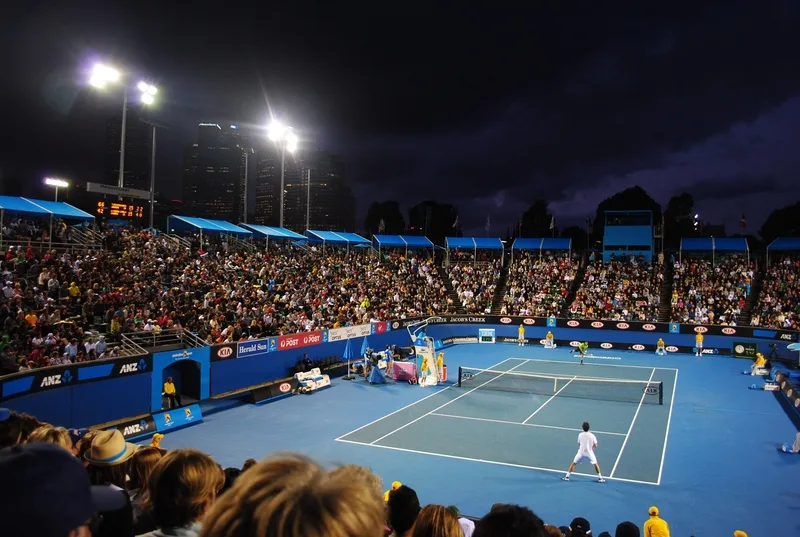
The first Grand Slam of the year takes place in Melbourne, Australia at Melbourne Park in January.
Since moving to Melbourne Park, the tournament has used some form of hard court. The type of hard court has changed a little bit throughout the years, making for a slightly different style of play.
Rebound Ace was the preferred choice of the hard courts from 1988 to 2007. Many longtime fans of tennis remember this distinctive all-green look that wasn’t too far off from what Har-Tru clay looks like.
In 2008, the Australian Open upgraded to PlexiCushion. This blue surface provided a little bit more cushioning and balance for players, and it was generally well received. They use PlexiCushion up until the 2019 tournament. This is when they decide to switch to a very similar blue GreenSet that they still use today.
The Australian Open didn’t become a true Grand Slam event that every top player made it to until the 1980s. Some are surprised that it first started in 1905, as the tournament was held on grass courts for over eight decades before moving to Melbourne Park.
French Open – Clay Court
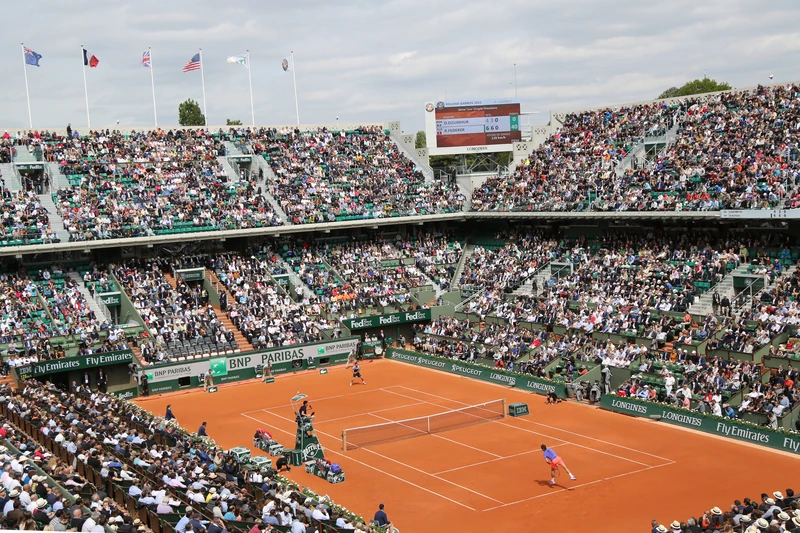
The French Open is the lone clay court Grand Slam event in tennis currently. Founded in 1881, they’ve been playing on clay courts since 1908. They moved to the current venue, Stade Roland Garros, in 1928.
Red clay gives Roland Garros a distinctive look. Even as other Grand Slam events change their surface, Roland Garros has stayed true to clay courts. Until 1975, they were the only Grand Slam tournament not played on grass.
Clay courts do a good job of slowing the ball down and creating a slightly higher bounce compared to other surfaces.
Players with big serves and hard shots, in general, find it difficult to hit winners on clay courts. This takes a huge advantage away from them. Players like Pete Sampras, John McEnroe, Jimmy Connors, and Boris Becker never won at the French Open despite having success everywhere else.
While there are other types of clay courts out there, red clay is the only one that gets a Grand Slam event.
The composition of the court at the French Open includes drain rock at the base, with crushed gravel, coal residue, crushed white limestone, and red brick dust built up to the top.
Wimbledon – Grass Court
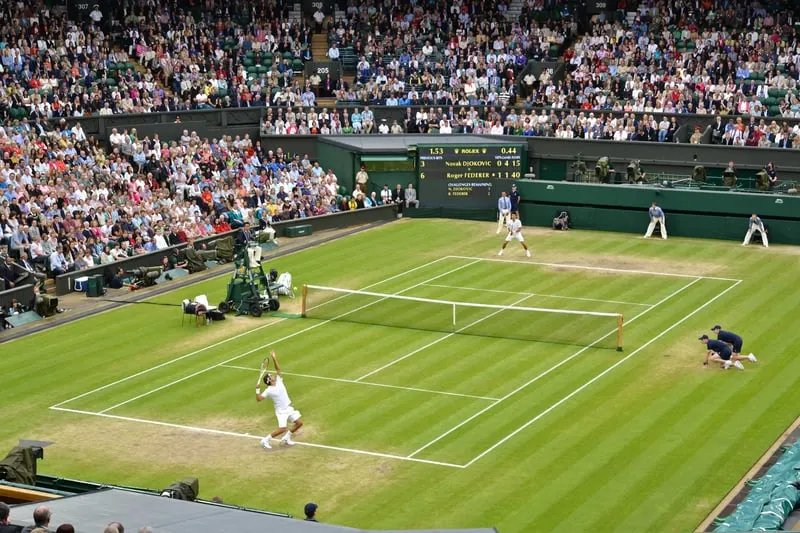
Wimbledon is the oldest tennis tournament in the world, and it’s considered the most prestigious as well.
First played in 1877, it had two venues called the All England Lawn Tennis and Croquet Club. Since 1922, it’s been located on Church Road in London, England.
Grass courts were the norm, as three of the four Grand Slam events used the surface at one point. However, the cost of upkeep and the overall evolution of the game led to a much shorter grass court season.
Specifically, Wimbledon uses perennial ryegrass for their courts. They’ve been doing that for over two decades. Before that, they use a combination of ryegrass and creeping red fescue. Ryegrass is known for its durability and strength so that the grass lasts throughout the two weeks of play.
US Open – Hard Court
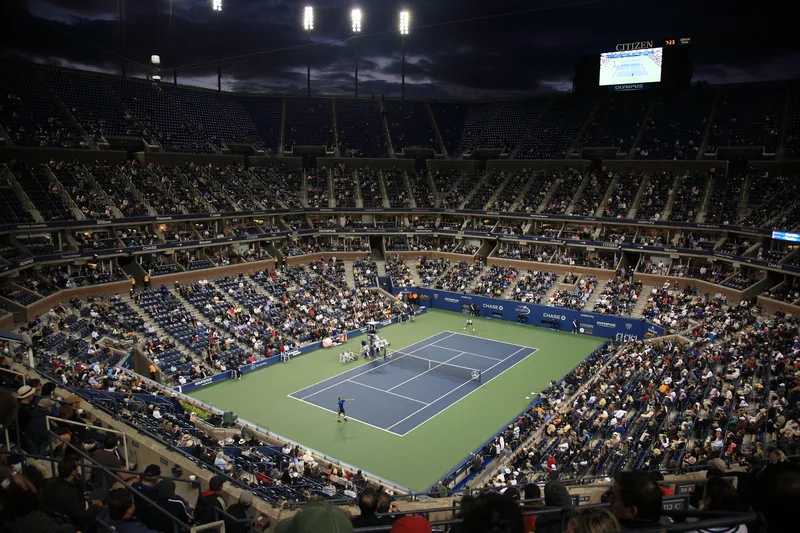
The final Grand Slam tournament of the calendar year is played on hard courts. They’ve gone through several iterations of the tournaments, including playing on grass for almost a century before changing in 1975.
For three years, the tournament took place on clay courts. Since 1978, the US Open has used some form of hard court.
For over 30 years, the US Open relied on Pro DecoTurf. It had the reputation of being a medium-fast hard court surface with a lot of cushioning for players. They switched to Laykold in 2020 which plays mostly the same.
A lot of players believe that the heat in New York City and the material of the court make the US Open play very fast. Conditions can change based on weather and if the roof is closed on the main court.
Do Any Other Court Surfaces Exist?
With Grand Slam tournaments played on grass, clay, and hard courts, it should come as no surprise that those are the prominent surfaces everywhere else on tour. With that said, a few other court surfaces make appearances here and there.
Har-Tru green clay is a slightly different option that’s mostly found in the United States. Tournaments like the Charleston Open have embraced their different type of clay as a way for players to transition from hard courts to clay courts.
Carpet is also used on occasion for tennis, although they’ve largely fallen out of style. At one point, the ATP Finals and the Paris Masters used carpet. Now, the ATP Challenger tour is one of the only ways to find carpet court events.
Safety issues popped up for a lot of tournament officials running carpet events. Too many changes of surfaces, especially late in the year, caused complaints that ultimately killed off carpet.
Will Grand Slam Court Surfaces Ever Change Again?
It’s hard to say it will never happen, but the four Grand Slams all seem to be very happy with their court surfaces at this time.
The French Open and Wimbledon will never change, as they have clay and grass as their identity, respectively. The US Open also seems to embrace the hard court surface as it’s similar to the concrete jungle nickname New York City has.
That leaves the Australian Open as the tournament most likely to change court surfaces by default. They have a slightly different hard court than the US Open, which helps differentiate the two tournaments. They seem settled in as a hard court tournament themselves, but the sport could evolve at some point.
Why Different Tennis Court Surfaces Matter
Different tennis court surfaces make it a challenge for all types of players throughout the year.
The ATP and WTA tour do a good job of keeping tournaments on similar surfaces together during the year so training can stay somewhat on schedule. That means there are different seasons, and the transition isn’t as challenging.
A modern-day complaint is that a lot of the surfaces play similarly compared to the past. While there has been some leveling out, different strategies do work out on different surfaces.
Keep that in mind, and it becomes even more remarkable when the same player wins on different surfaces in the same calendar year.
